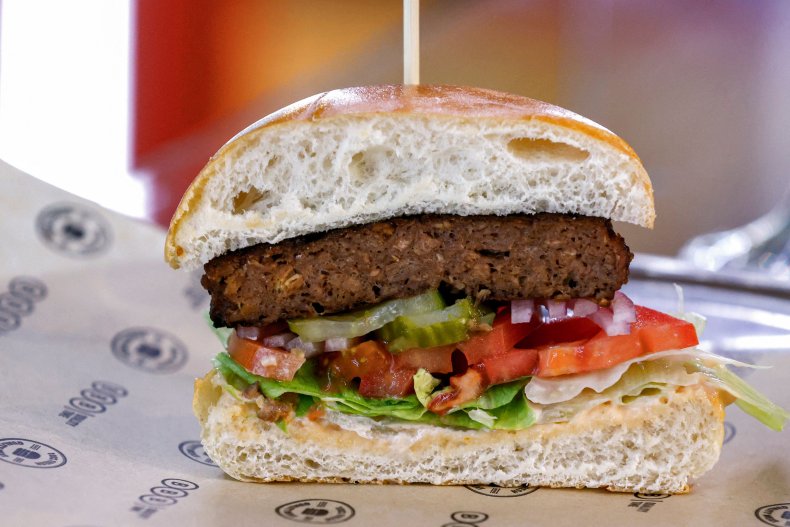In 2019, Australian agritech business Vow created a kangaroo dumpling from the cells of the animal, becoming the first in the world to create a food product from the tissue cells of a wild creature. It is one of a number of Australian agricultural technology businesses that are crafting meat alternatives. While alternative proteins hold promise for health benefits, sustainability, positive environmental impact and hospitality, it is being obstructed by some in the traditional farming and livestock industry.
Vow is one of the leading companies in the alternative proteins market. Co-founders Tim Noakesmith and George Peppou seek to attract consumers who traditionally eat meat. With $7.7 million in venture capital behind them, their intention is to bring products to market in Singapore by the end of 2022.
“Growing meat sustainably from stem cells will have a fraction of the footprint of traditional livestock farming in terms of land use and water use and there is no need for culling animals,” Peppou said. “But we are not in competition with traditional livestock farming. There is plenty of room for traditional meat as well as plant-based and cell-cultured meat to provide greater choice for consumers.”
While some in the livestock industry can appreciate that there is room for both traditional and alternative proteins in the global market, others are furious that meat products are sharing supermarket space with meat alternatives. They’re demanding meat alternatives cease labeling products as “sausages” or “burgers” and stop representing meat as unsustainable or damaging. This comes as Australian cattle were at a record export price at the end of last year.
Australia exported 70 percent of the meat it produced in 2019, and is the seventh largest beef producer in the world. In 2018-19, the red meat and livestock industry generated $72.5 billion in industry turnover. Understandably, the industry is in self-protection mode, but there is little evidence that alternative proteins are impeding on market value, nor that consumers are mistakenly buying tofu sausages when they mean to buy beef sausages.
The appalling and cruel conditions faced by Australian animals aboard live export ships (which led to a three-year ban for Emanuel Exports) and in the countries they arrive in (including Indonesia) has been well publicized. Australia’s carbon footprint is excessive too. Surely a meat alternative industry should be part of the zero-carbon plan Australia agreed to at the 2021 United Nations Climate Change Conference (COP26). Unfortunately, intensive animal farming and high consumption of dairy and meat, which is a major contributing factor to environmental degradation, wasn’t part of the agreements made by nations at the major conference last year.
While they can’t halt science, nor demand that veganism be outlawed, some in the livestock industry can demand political action be taken to create roadblocks for the alternative protein industry. In August 2020, the Senate Rural and Regional Affairs and Transport Legislation Committee convened a plant-based labeling and market industry roundtable to argue that non-meat products labeled with traditional meat product names like “sausage,” “burger” or “mince” were misleading consumers and negatively impacting the credibility of meat providers.
“Plant and alternative proteins are emerging in the context of a global population growing to 10 billion by 2050, and as an export oriented, value-added product complementary to Australia’s existing food system well positioned to contribute to Australia meeting soaring global demand for protein. Without strong support for this industry domestically, Australia risks forgoing a valuable new export opportunity,” wrote the Canberra-based Alternative Proteins Council in their submission to the August Senate Committee inquiry on meat labeling.

JACK GUEZ/AFP via Getty Images
Australia’s dominant supermarket chain, Woolworths, holds a 37 percent market share, followed by Coles and independent retailers. As part of their submission to the inquiry, they revealed that not only is the plant-based sector experiencing significant demand among consumers (40 percent growth year-on-year), but that there was marked demand from mainstream customers buying plant-based proteins, “especially tofu, falafel and vegetable-based burgers” along with meat, rather than the vegan or vegetarian market.
Research conducted in March last year indicated that 62 percent of Woolworths customers purchased meat or dairy-free products “at least sometimes.” Eighty-eight percent of plant-based product sales were “skewed towards customers who also bought meat.” They also claimed the demand for red meat was rising. This would suggest that the growth in plant-based alternative proteins to meat are complementing the range of choices to consumers, rather than recruiting meat and dairy consumers away from those products.
Australia’s plant protein market is forecast to be worth $4.03 billion a year by 2030. Globally, the annual value of alternative meats, dairy, egg and beverage sectors is projected to rise to about $55 billion by 2025.
According to a March 2019 report by Australia’s Food and Agribusiness Growth Centre (FIAL), global protein consumption is projected to increase by 271 million tons in 2025. This is due to population growth and an increasing appetite for protein as a source of nutrition. The report also found that plant-based protein (like chickpeas, quinoa, legumes and mushrooms) have been the largest source of global protein (66 percent) consumed since 2000.
“The emerging plant and alternative proteins market does not present a threat to existing traditional animal protein production,” said Mirjana Prica, managing director at FIAL.
The growth in demand for protein globally means a win-win for the livestock industry and alternative proteins businesses. Alternative proteins could provide 17,000 jobs by 2030, with a value of $3.64 billion while meat proteins are likely to provide 35,000 new jobs with a value of $22.6 billion in the same time frame.
Cat Woods is a freelance writer based in Australia. She writes on art, culture and travel for international publications, and regularly writes on music for both U.S. and Australian publications. When not writing, Cat teaches yoga, Pilates and barre, listens to podcasts, binge watches anything with subtitles and walks her two highly intelligent, very bossy dogs around her beachside home in the inner south of Melbourne.
The views expressed in this article are the writer’s own.





More Stories
U.S. charges FTX founder Sam Bankman-Fried with criminal fraud
Time series forecasting with XGBoost and InfluxDB
Full-stack engineering is one-third as good